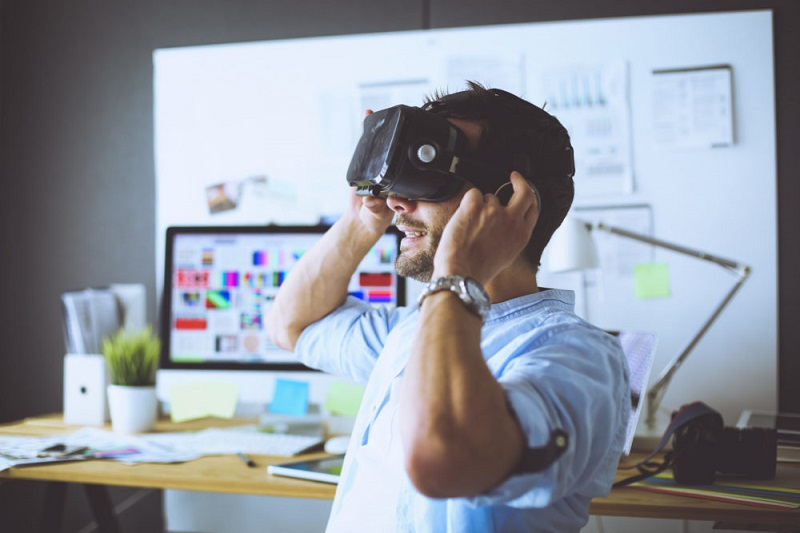ATD Blog
Growing Talent Development Firms: Are You Thinking About VR?
Fri Feb 25 2022

No other learning methodology has flourished more with the advent of technology than the use of simulations. They have been used for decades in the armed services and airline industries for training prospective pilots, but their evolution in the learning and development industry has been relatively slow until recently. Although one could classify a role play or a paper-based in-basket exercise as a simulation, I’m referring to business gaming in which multiple scenarios and factors are presented requiring frequent fast-paced decision making. These business games used to come in two forms: 1) board games that replicated real-life conditions with competitive teams moving through a number of situations to find a favorable-end business result and 2) computer-based simulations capable of creating ever-changing data-driven conditions where branching allowed for navigating different paths with the overall objective of managing a hypothetical business effectively. Quasi-simulations using video demonstrations of technical workers operating machinery or manufacturing processes have also been popular, but mostly in 2D or 3D environments.
Another recent use of simulations has been in the assessment world providing real-time, although largely avatar-based, scenarios in which candidates are asked to respond. Some simulations have become sophisticated—for instance, computer-driven branching and recording allows for adaptive assessment techniques. In other words, how one responds generates different next actions required. These assessments can also be used to determine development needs for both candidates and current employees who want to progress within their organization. Not long ago, these simulations were paper based and some of them are still used today.
Today, however, a whole new type of simulation is available. It not only replicates real-world environments more accurately but also enables the user to deploy their psychomotor and cognitive skills to adjust what is taking place inside the simulation by using the virtual reality (VR) methodology. If you haven’t had a chance to observe and participate in these types of simulations, you will be surprised at how far this technology has evolved. Up until now, it has been expensive to pull together the necessary hardware and software to scale this delivery. But, with the development of Oculus and other headset technology at a reasonable $300 consumer price point, in a short time, many people will have them in their homes and their workplaces.
Why now? First, technology has advanced quickly enough to make this feasible—although, in this case, the software availability has preceded that of the hardware where, in the past, the hardware typically has driven the software (think iPhone and the thousands of follow-up apps). Second, it is clear that a good portion of training dollars are being wasted or, at a minimum, returning very little on their investment. This is largely because it continues to be difficult to transfer classroom lessons back to the job, particularly if they require higher level motor, interpersonal, and cognitive skills. Third, the level of comfort with remote learning as a result of the pandemic has opened up the minds of decision makers to the benefits of this technology—better use of time, energy, resources, and money.
VR technology has evolved efficiently enough to replicate the real-world work environment that “social presence,” one of the main advantages of classroom instruction, is no longer reserved for that learning environment. With VR, you can feel socially present while also participating with multiple players simultaneously going through the same experience. The VR process is equally engaging in that it is an experiential and embodied learning format, which allows for empathetic feelings to be both received and projected with others.
To say the L&D industry is at a real inflection point with VR as a learning delivery method is an understatement. Not only has it become relatively affordable, but there are now software real-time game development platforms, such as Unreal Engine and Unity, speeding up the pace of development and lessening the costs to do so. These simulations appear to be more relevant and readily useful for technical, procedural, or cognitive skills than for the traditional interpersonal and communications soft skills, but it is possible to use “live” people behind avatars. It is only a matter of time before these simulations will realistically represent these soft skill interactions. When artificial intelligence (another quickly emerging technology) meets virtual reality, the sky will be the limit.
In summary, there are many benefits of VR: speed of learning, on-demand availability, lower risk rate for highly dangerous tasks like flying an airplane, and high engagement. The question becomes how ready are you to take on this new reality?
As you think through your offer and what it delivers, how would you adapt VR to enhance the intended learning experience? How would it reduce the cost and time for delivery? How could you conduct an experiment with your current offer to assess the benefits of incorporating VR into your arsenal of delivery approaches?
For more insight, check out my book The Complete Guide to Building and Growing a Talent Development Firm.
